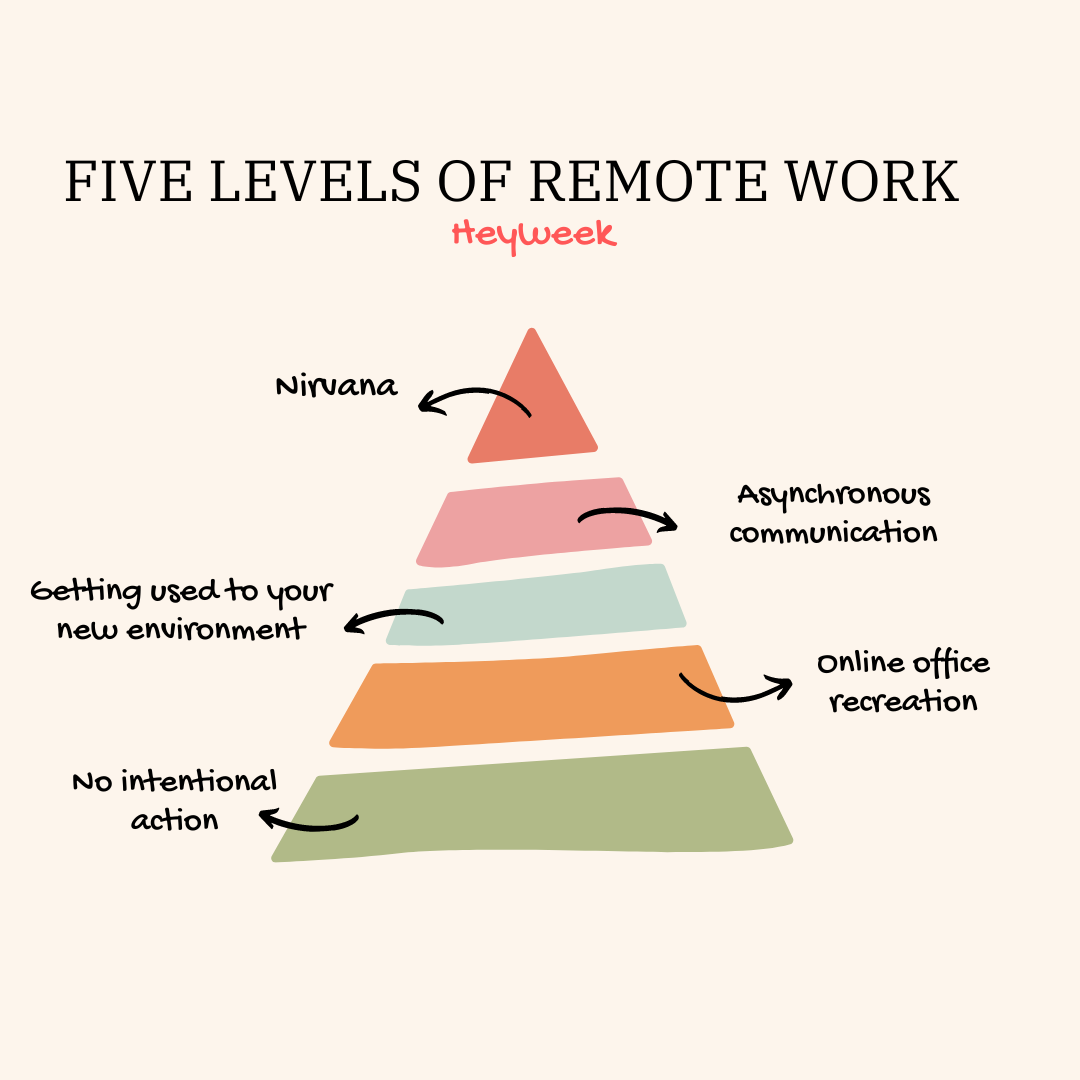As the COVID-19 epidemic spreads, countless companies worldwide will have staff working remotely from home. Numerous companies were unprepared for the possibility of employees working from their homes and have had to devise new strategies to ensure their tasks can be completed as efficiently as possible from any place.
Companies are beginning to recognize their level of readiness and deficiencies now that everybody is no longer in the office. What if you've always worked remotely and your company does not possess a fixed office?
It's precisely what Automattic is doing.
Matt Mullenweg established Automattic in 2005, the company behind WordPress, which powers over 30% of all the world's websites. Despite employing 1,200+ people, Automattic does not have a single office, and all employees in 75 countries collaborate online. Mullenweg appeared on Sam Harris' Making Sense podcast to discuss the five levels of distributed teams. We believe that is so important that we thought we'd review the levels in greater depth.

Level 1 - No intentional action
This represents the starting point, and the corporation has not taken any deliberate action to address remote working in the long term. They have most likely not purchased licenses for collaborative effort tools, nor have those who regarded security procedures such as VPN licenses. Staff can still carry out basic day-to-day tasks such as sending and receiving emails and dialing into meetings at this level, but they are likely putting off many things until they return to the office. Because COVID-19 is a long-term situation, so much work may be put on hold. Staff will be unable to work as they did in the office and will require time to adjust to working from home. Before COVID-19, the vast majority of businesses were in this situation.
Level 2 - Online office recreation
This is the level at which many businesses are now or will soon be. They've had time to adjust to their new working environment and the resulting changes. Employees are now using video calling software and instant messaging along with email. These two tools are a big step to creating the best office possible. This will make things more social; instead of a standard phone call, you can have a video call with a colleague. Some managers may install 'Big Brother' software on their employees' computers to ensure their employees are logged on and working during working hours. However, this is a regressive step when dealing with knowledge workers. According to research, knowledge workers are more productive with autonomy, mastery, and a sense of purpose. Snooping on your employees effectively removes freedom and may prove counterproductive.
Level 3 - Getting used to your new environment
At this level, you start adapting to the new environments and implementing new strategies to make your day-to-day operations feel as normal as possible.
You and your team may decide to use shared documents. This is where a document is shared online, and many people can edit it simultaneously in a real-time discussion, such as a meeting. Consider the advantages of allowing all meeting delegates to review and contribute to meeting notes simultaneously.
Chat and text-based communication can eliminate the need to walk to the other side of the office to speak with someone. However, it also means the employees must be transparent in their messages/emails, and ensuring that messages are not misinterpreted is even more critical. If in doubt, use API (Assume Positive Intent), and your messaging exchanges will be more successful.
Mullenweg's approach to meetings is one-of-a-kind. Meetings, he believes, should:
- Only hold an appointment if it is necessary and the outcome cannot be achieved through email, phone calls, or instant messages;
- Make the meeting no longer than necessary. You don't want to waste time on meaningless small talk; instead, using your time wisely will result in a more meaningful, productive meeting;
- Create a meeting agenda and goals for what you want to accomplish during the meeting. Give it a goal;
- Only invite those who are necessary. There is no need to invite people who may not have anything to contribute;
- Set due dates and have everyone agree on the next steps so that you don't have the same meeting twice;
- Meetings should not be used to communicate simple information; this is where email or messaging is more appropriate.
Level 4 - Asynchronous communication
Many things do not require an immediate response, and they can usually wait for the recipient to respond with an email or a message when it is convenient for them. Of course, a phone call should be made if there is a sense of urgency; however, this should only be done when something requires a critical response.
Allowing yourself more time to respond to something will allow you to think about your response rather than responding on the spot, which may be ineffective. To avoid sending messages back and forth, your response should be constructive and informative. You should include the following in your message:
- An explicit action or outcome is required;
- A deadline;
- What to do if a requirement cannot be met.
Asynchronous communication has decoupled productivity and output from a physical presence on the "factory floor" in companies that use it. The industry evolved from the industrial revolution when workers were required to be visible in the factory, and output was directly related to the hours spent with their machines. Working from home allows employees to be more flexible with their working hours, which may suit night owls or larks or child care needs, among other things.
Level 5 - Nirvana
This is where you make your workplace your own and do more things that benefit you personally. Mullenweg, for example, stated that he likes to do squats and push-ups between meetings to keep his blood flowing and his body active. He will also do some light dancing while reading and responding to emails. He also mentions having a candle on his desk to aid in breathing. He couldn't do any of this if he were at the office!
At what level is your company? Different companies have different needs and ways of structuring the organization. The 5 levels of distributed work provide an insightful journey a company can take to improve the well-being of its employees and increase productivity.






